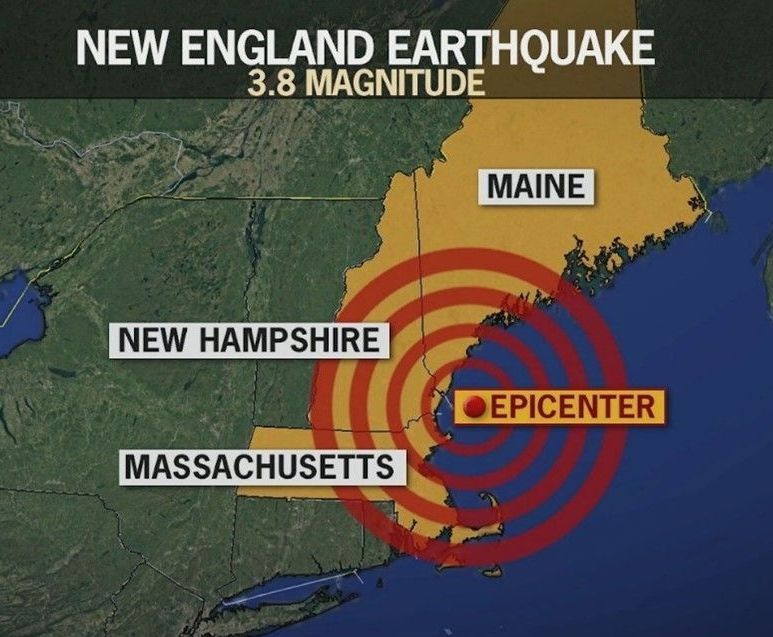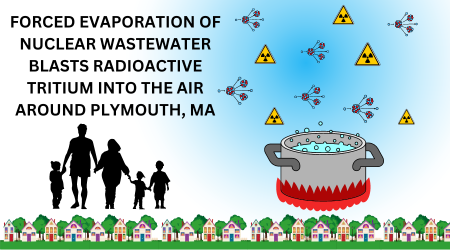Cancun or Concrete Safety? My Spring Break with the NRC
- By C-10 Administrator
- •
- 26 Mar, 2018
By Christopher Nord, C-10 Board Member

Snow was starting to pile up in the last few weeks of winter. Everyone who could afford it was hopping a jet for the Caribbean; and naturally I began to wonder where I might go for some fun down south. How better to renew my joie-de-vivre than to hang out with an old friend at conference full of nuclear engineers?
The U.S. Nuclear Regulatory Commission (NRC) held their 2018 Regulatory Information Conference
(RIC) from March 13-15 in Bethesda, Maryland. Included were two technical sessions concerning the problems posed to the concrete structures of atomic reactors: the first, from a chemical process called Alkali-Silica Reaction ( ASR
); the second, from the effects of radiation on concrete.
These were of interest to C-10 because the Seabrook Station nuclear power plant in coastal New Hampshire is the first U.S. commercial atomic reactor known to have ASR propagating through its walls. C-10 is involved in a regulatory proceeding
with NextEra Energy Seabrook, LLC (Seabrook’s owner) over their proposed handling of ASR. I flew down between nor’easters in order to attend the conference with Paul Gunter, Director of the Reactor Oversight Project at Beyond Nuclear.
The first RIC session was called “ Concrete Degradation Part 1: Perspectives on Alkali-Silica Reaction Effects on Structural Capacity of Nuclear Concrete Structures,
” and included speakers representing institutions of three nations, the U.S., Canada, and France. A common theme through all presentations was the search for a “predictive model” — some method for gauging the reduction in concrete strength based on certain measurements, such as crack width.
This is a particularly thorny problem for the NRC — and the nuclear industry — because years of study on the part of organizations such as the National Institute of Standards and Technology (NIST) have underscored the difficulties inherent in modeling ASR progression. However, one feature of ASR is completely predictable: it will eventually lead to structural failure.
The second session, entitled “ Concrete Degradation Part 2: Perspectives on Radiation Effects on Structural Capacity of Nuclear Concrete Structures
,” provided insights from experts from U.S. and Japanese agencies and laboratories.
Among the experimental results discussed, their talks highlighted the difficulty of gathering data to quantify radiation’s impact on components most exposed within operating reactors — due to their placement within high-radiation areas. It is clear, though, that while ASR impacts the cement paste constituent within concrete, radiation impacts the aggregate — differently for different minerals present.
The learning curve for understanding how ASR will affect the operational capabilities of atomic reactors is steep: all U.S. reactors were constructed without codified NRC regulations for ASR management. Because of this regulatory omission, the NRC is having to play catch-up — trying to find methods to monitor and respond to ASR’s progression, while its presence at Seabrook has already been known for years.
ASR at Seabrook
was first acknowledged in 2010; in 2012, it came to light that certain safety-related structures at the plant had lost as much as 30% of their expected strength. In 2014, C-10 filed a Petition for Rulemaking filed with the NRC, calling for the adoption of already existing standards for testing and analysis of ASR. We are still awaiting a ruling on the petition.
In 2015, we filed a Petition for Emergency Enforcement Action for basically the same cause — and we traveled to NRC Headquarters outside of Washington, D.C., in order to give testimony as a group, in support of our petition.
While no action continues to be taken by the NRC on our original petition request, we believe that neither NextEra, nor the NRC, know the actual state of deterioration of the spent fuel pool at Seabrook Station, or the supporting structures for the reactor pressure vessel.
Every human, and every living thing within the ingestion pathway (50 miles) and beyond, of Seabrook relies on these concrete structures to isolate byproducts of atomic fission, many of the most toxic substances on earth — some of which are deadly upon contact; some of which remain deadly for thousands of years.
The NRC has publicly stated that they will not complete their consideration of NextEra’s application for a 20-year extension to the operating license until a method for handling Seabrook’s ASR is codified.
As intervenors in Seabrook’s license amendment review docket
, C-10 is on track to present its case before the NRC’s Atomic Safety and Licensing Board at an adjudicated public hearing expected to be held in February 2019.
Follow us



